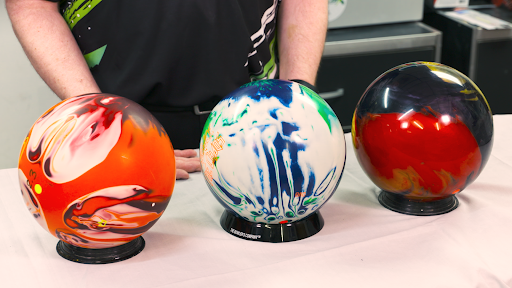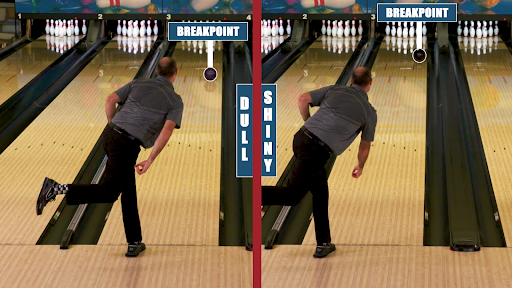
The Importance of Experimenting with Different Balls
Scott PohlBowling’s challenging oil patterns can humble the best in the world. In order to be competitive, it’s imperative that you experiment with different bowling balls.
Scott Pohl, owner of On Track Pro Shop, identifies three different coverstocks commonly found in today’s game that will help determine which is the best bowling ball for you.
Dull Coverstock
Bowling balls with a dull finish hook early and have less backend reaction when they hit friction down lane. Dull coverstock bowling balls are typically used on higher volume patterns and are also known as aggressive/strong bowling balls.
Shiny Coverstock
Bowling balls with a shiny finish hook later down the lane and have a strong backend reaction when they hit the friction down lane. Shiny coverstock bowling balls are also classified as weaker bowling balls and are generally used on lower volume patterns.
There is some confusion out there between the classification of stronger and weaker bowling balls. Stronger (dull coverstock) hooks earlier and has less backend reaction, while weaker (shiny coverstock) rolls longer down lane and has a sharper back end reaction. Keep this in mind when determining which ball is the best bowling ball for you.
Smooth Coverstock
Bowling balls with a smooth finish have an even control on the lanes. Usually known as benchmark bowling balls, smooth coverstock bowling balls offer a predictable reaction, hooking in between dull and shiny bowling balls down lane and also in between the backend reaction of dull and shiny coverstocks.
Layouts and Bowling Ball Weight
A bowling ball’s coverstock is a great way to identify where the bowling ball will hook on the lane, but it is not the only determining factor. For instance, you can make a shiny bowling ball hook earlier and a dull bowling ball hook later by adjusting the layout on the ball.
Another great way to make a bowling ball hook where and when you want it to is to apply surface or sand your bowling ball with sanding pads. The lower the grit sanding pad, the sooner the bowling ball will hook. The higher the grit sanding pad, the later the bowling ball will hook.
By adjusting layouts and applying surface you can make a bowling ball hook any way you want or need. Make sure you are throwing the proper weight bowling ball down lane. Throwing a bowling ball that is too heavy will give you slower ball speed creating deflection at the pins. It also causes fatigue and can lead to injury.
Check out “Using Different Types of Bowling Balls” and “Bowling Ball Types: Track Identification” to learn more about what kind of bowler you are and which ball is the best bowling ball to add to your bag.


